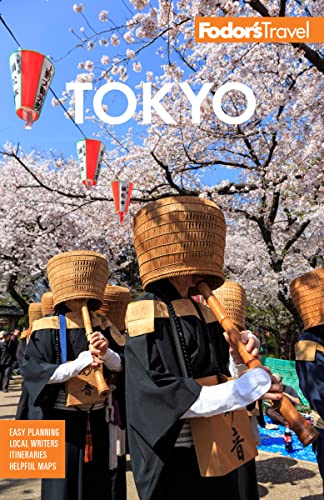Train
Riding Japanese trains is one of the pleasures of travel in the country. Efficient and convenient, trains run frequently and on schedule. The Shinkansen (bullet train), one of the fastest trains in the world, connects major cities north and south of Tokyo. It is only slightly less expensive than flying, but is in many ways more convenient because train stations are more centrally located than airports (if you have a Japan Rail Pass, it's extremely affordable).
Other trains, though not as fast as the Shinkansen, are just as convenient and substantially cheaper. There are three types of train services: futsu (local service), tokkyu (limited express service), and kyuko (express service). Many tokkyu and kyuko trains have a first-class compartment known as the Green Car. Smoking is allowed only in designated carriages on long-distance and Shinkansen trains. Local and commuter trains are entirely no-smoking.
Because there are no porters or carts at train stations, it's a good idea to travel light when getting around by train. Every train station, however small, has luggage lockers, which cost about ¥300 to ¥700 (depending on the size) for 24 hours.
If you plan to travel by rail, get a Japan Rail Pass, which provides unlimited travel on Japan Railways (JR) trains (covering most destinations in Japan) but not on lines owned by other companies. For the Sanyo, Tokaido, and Kyushu Shinkansen lines, the pass is valid on any trains except the Nozomi and Mizuho, which stop infrequently. However, it is valid on all trains on the Yamagata, Tohoku, Joetsu, Akita, and Hokuriku Shinkansen lines.
The JR Pass is also valid on some local buses operated by Japan Railways, though not on the long-distance JR highway buses. You can make seat reservations without paying a fee on all trains that have reserved-seat coaches, usually long-distance trains. The Japan Rail Pass does not cover the cost of sleeping compartments on overnight trains (called blue trains).
You can purchase one-, two-, or three-week passes. A one-week pass is about as expensive as a regular round-trip ticket from Tokyo to Kyoto on the Shinkansen. You must obtain a rail pass voucher prior to arrival in Japan (you cannot buy them in Japan), and the pass must be used within three months of purchase. The pass is available only to people with tourist visas, as opposed to business, student, and diplomatic visas.
When you arrive in Japan, you exchange your voucher for the Japan Rail Pass. You can do this at the Japan Railways desk in the arrivals hall at Narita Airport or at JR stations in major cities. When you make this exchange, you determine the day that you want the rail pass to begin, and, accordingly, when it ends. You do not have to begin travel on the day you make the exchange.
Japan Rail Passes are available in coach class and first class (Green Car), and as the difference in price between the two is relatively small, it's worth the splurge for first-class luxury, especially on the Shinkansen. A one-week pass costs ¥29,110 coach class, ¥38,800 first class; a two-week pass costs ¥46,390 coach class, ¥62,950 first class; and a three-week pass costs ¥59,350 coach class, ¥81,870 first class. The one-week pass pays for itself after one Tokyo–Kyoto round-trip Shinkansen ride. Contact a travel agent or Japan Airlines to purchase the pass.
Many travelers assume that rail passes guarantee them seats on the trains they wish to ride. Not so. If you're using a rail pass, you should book seats ahead. You can reserve up to two weeks in advance or just minutes before the train departs. If you fail to make a train, there's no penalty, and you can reserve again.




